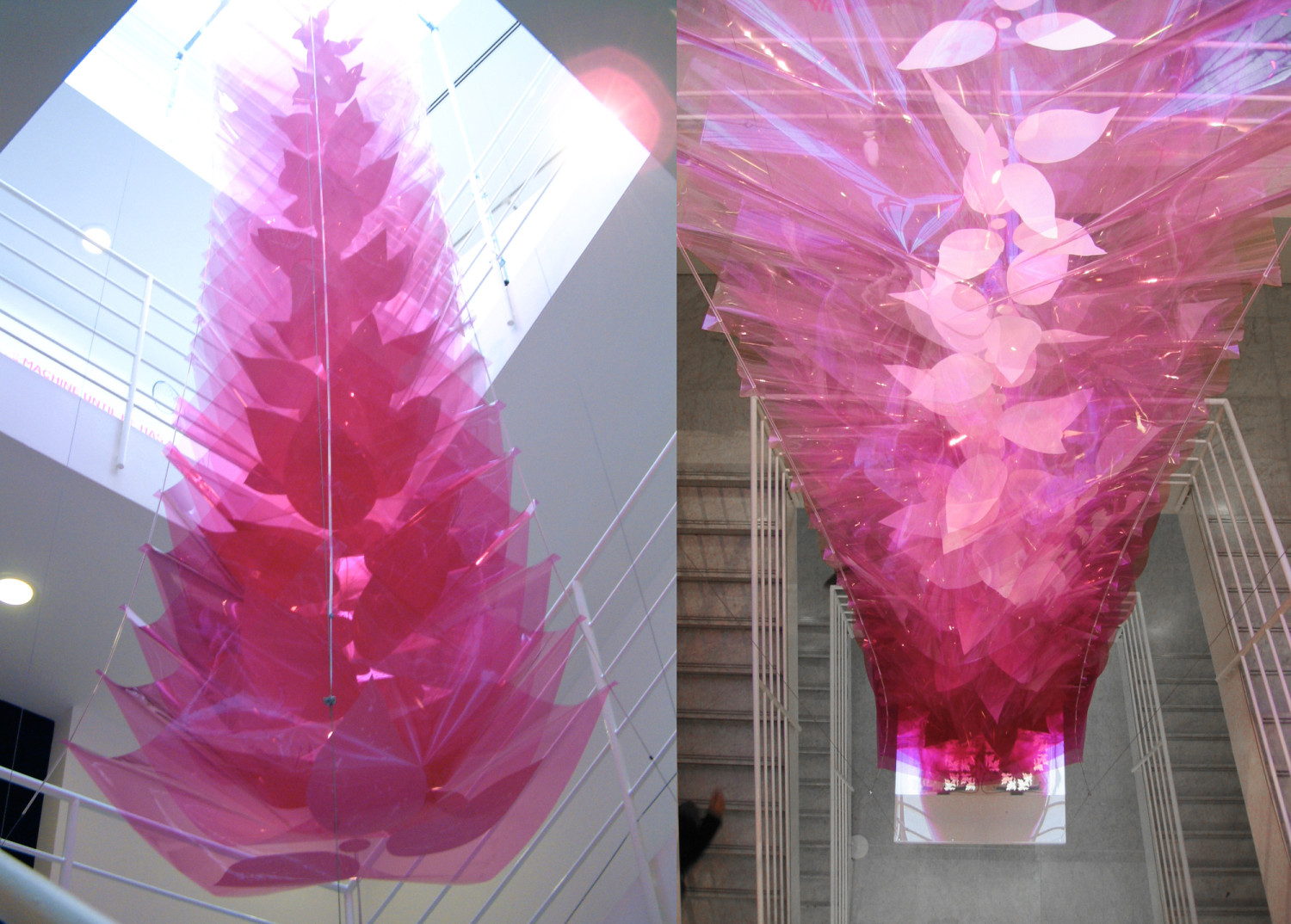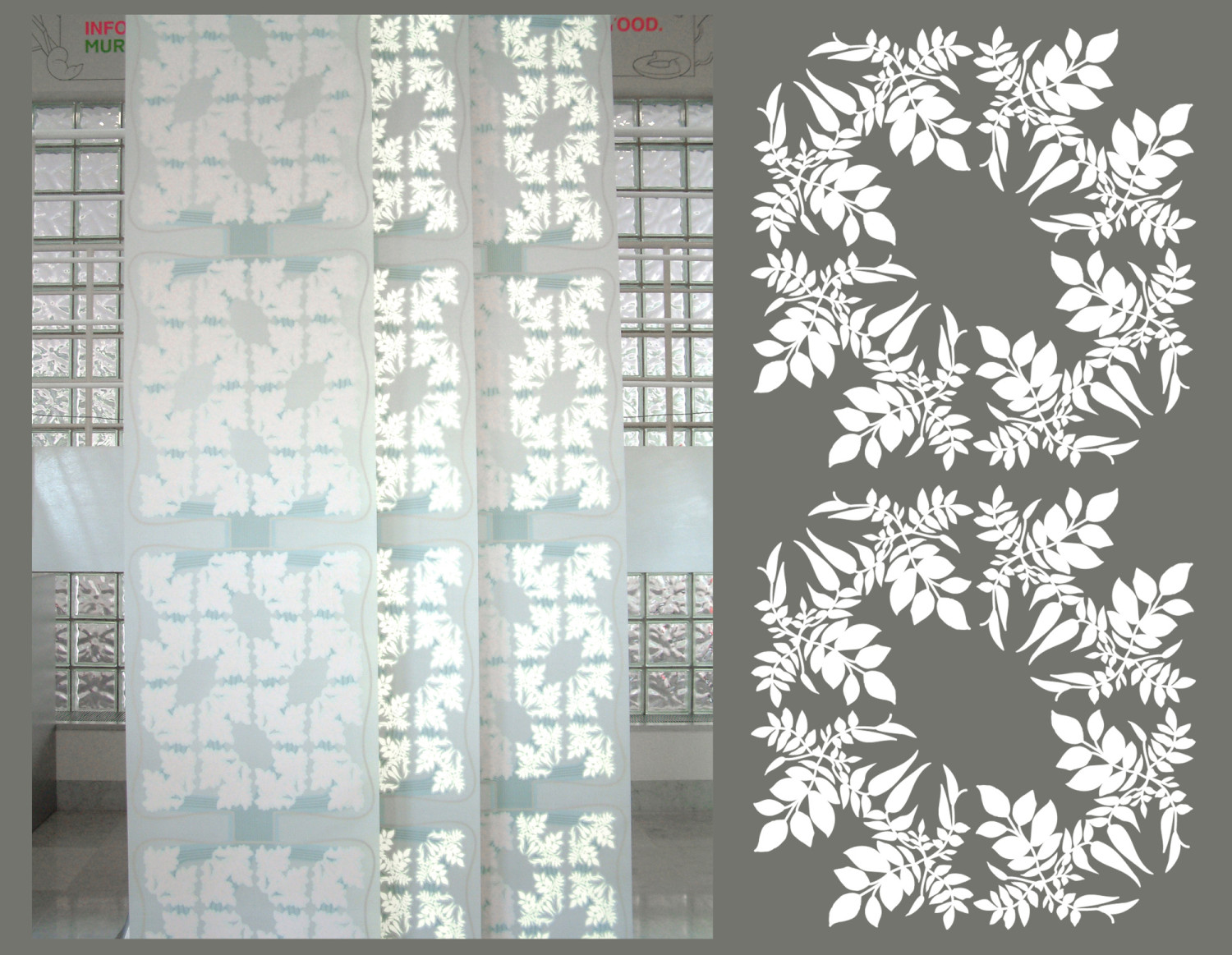A site specific installation, Botanical Scan and Blumen Wallpaper was commissioned for the Design Museum, London and sponsored by British manufacturers, Graham & Brown and supported by the Esmée Fairbairn Foundation.
Botanical Scan
We conceived the Botanical Scan installation for the Design Museum atrium inspired by botanical growth. Botanical Scan creates the illusion of a three dimensional plant from a sequence of transparent layers, combining a site specific approach with our ongoing research into patterns in nature. The arrangement of leaves in Botanical Scan is based on a pattern derived from the golden ratio.

Our understanding of geometry is and has been based on observing nature, on the way elements self-organize in compact, efficient forms producing everything from crystals to trees to galaxies. Here we can observe a natural intelligence that informs all matter, organic and inorganic, an intelligence that also structures the universe spatially. The patterns of natural growth often involve only one extremely well considered step applied in a recursive process. And with each iteration some of these processes define the ultimate natural balance, the golden ratio, with a growing precision.
Blumen Wallpaper-Electronic wallpaper display

Blumen transforms traditional decorative surfaces into a rich, dynamic display of botanical life. It divides and ornaments space and can be seen in a wallpaper format as sliding panels. By working with traditional pattern making we have created an ornate printed design that is at the same time a working electrical circuit using electroluminescent technology. The repeating pattern allows the piece to be cut into smaller sections and even reassembled. The Blumen print is constructed from a number of addressable cells and with the use of various sensors the pattern emerges and develops in response to its environment. Based on the space the panels are presented in, and the characteristics of the sensor used, we develop an animated pattern language described in software.
LINKS: Design Museum